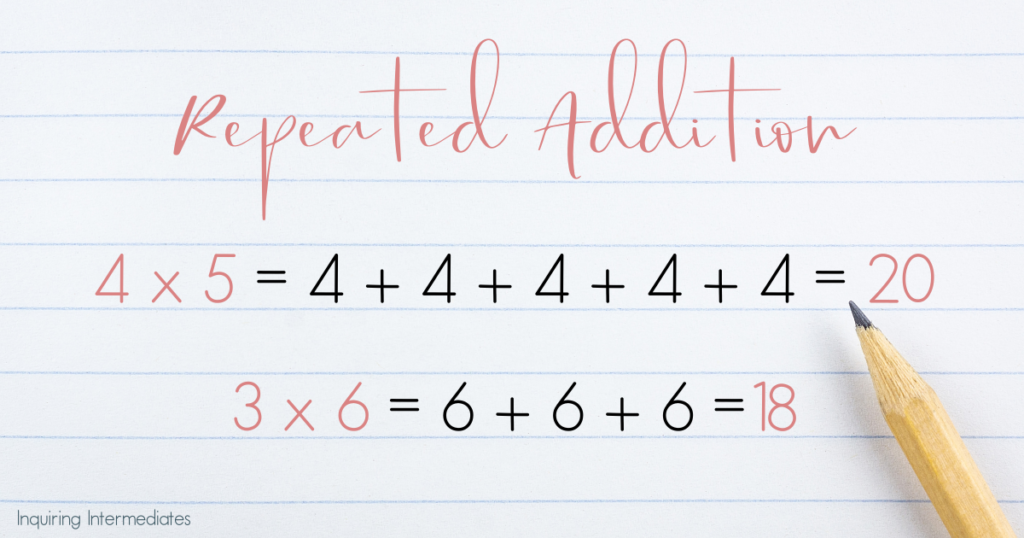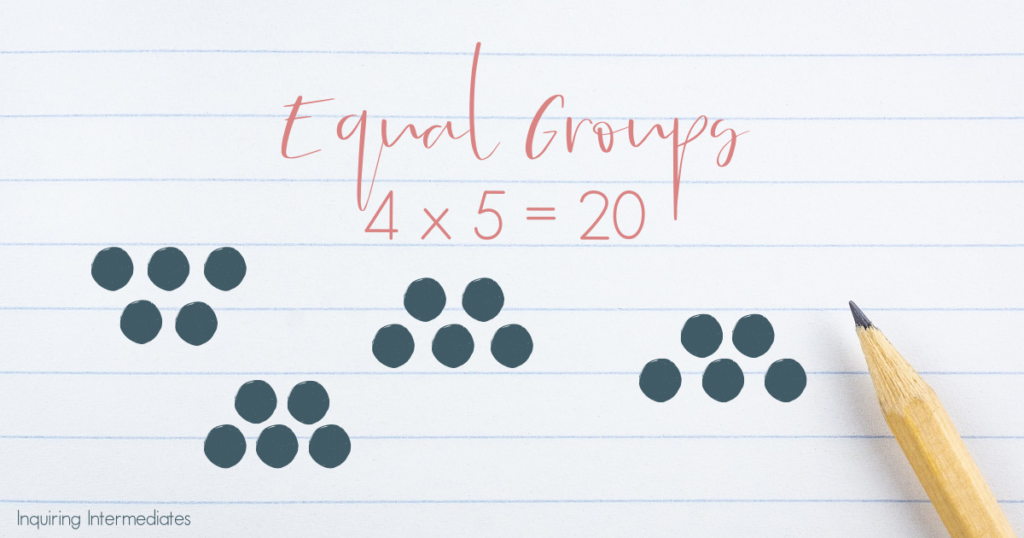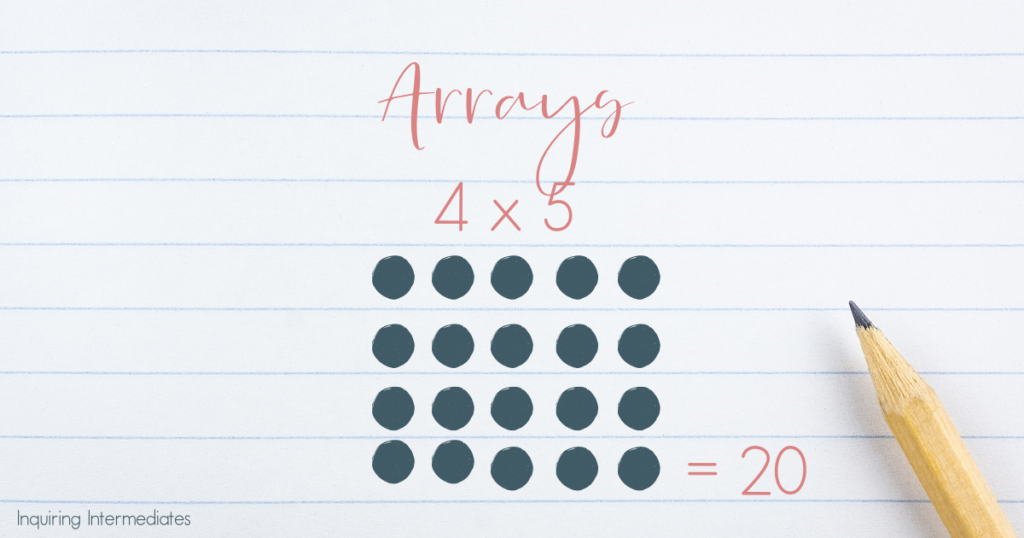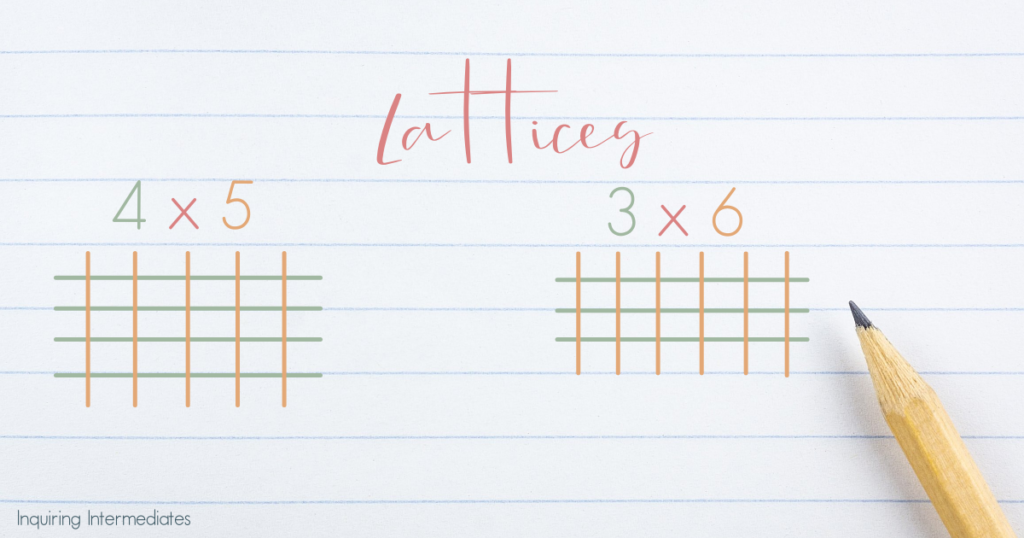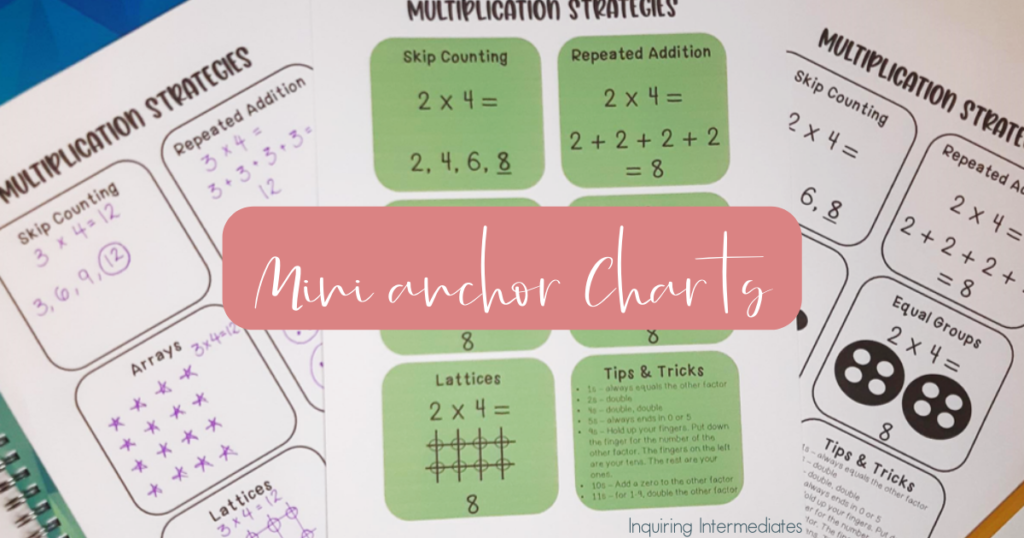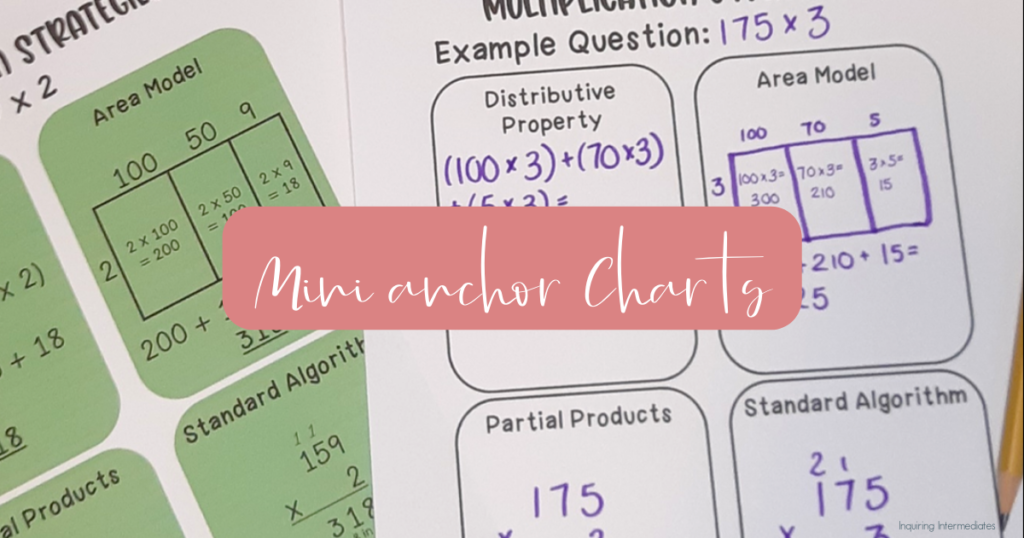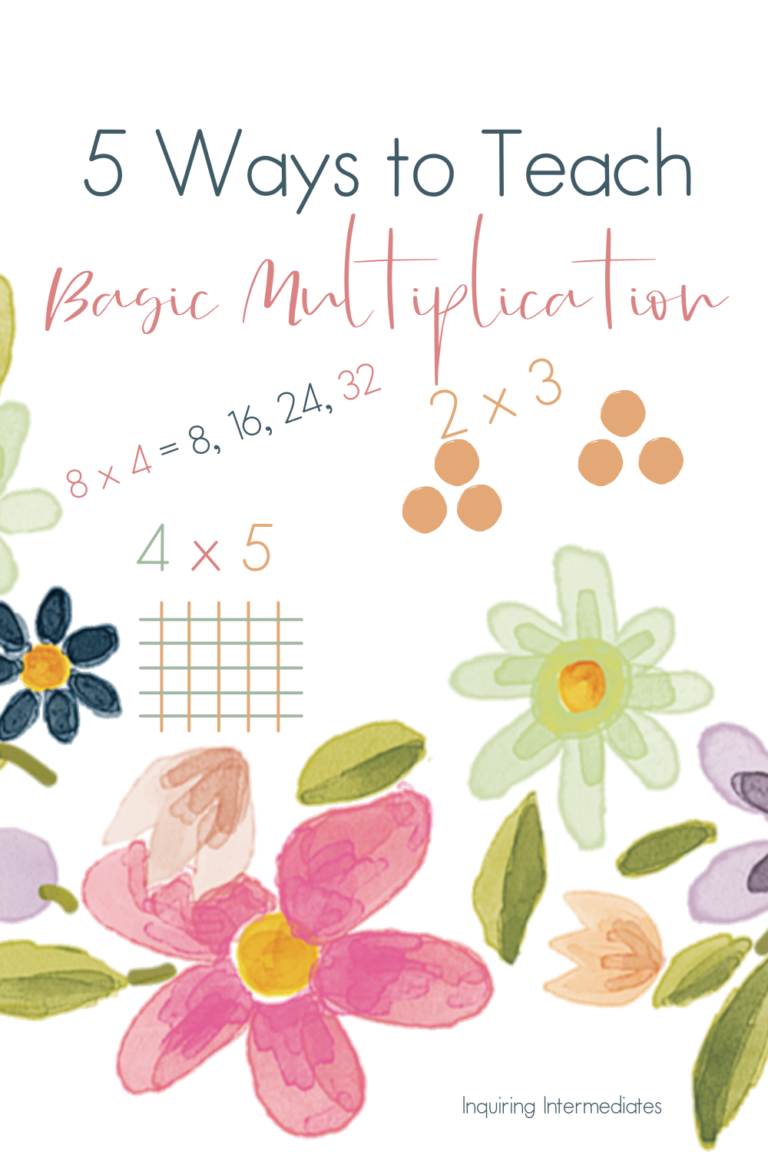As a kid, I spent hours trying to memorize my math facts. My parents would drill me with flashcards at home or barrage me with questions on the way to piano practice. While I eventually did learn my multiplication facts, I hated every minute of the process! And besides, while the flashcards did help me memorize my multiplication facts, they were not an effective way to teach multiplication concepts.
Before students start memorizing their multiplication facts, they need to understand how multiplication works. Math based on pure memorization will only get you so far! Here are five different multiplication strategies you can use for single-digit multiplication with your students. Even young students can engage with these math strategies and there is so much potential for making math visual, integrating music and the outdoors, and engaging in hands-on learning!
Skip Counting
Also called ‘counting by ____s’, skip counting is a great way for students to dip their toes into the world of multiplication. Encourage them to use number lines and look for patterns as they go. After all, learning multiplication is all about recognizing patterns! There are lots of great skip-counting songs that work wonders, and you can find several for free on Youtube. As a kid, my teacher loaned me a cassette tape with a song for counting by fives to take on vacation with me. My mom made me listen to it over and over on the plane and I can still sing it to this day!
Repeated Addition
Repeated addition is like the slower sibling of skip counting, but it’s a great way to get kids to think about how multiplication works! Skip counting can help kids with repeated addition because they will know they have made a mistake if they come up with a sum that they can’t skip count to. Repeated addition can help kids with skip counting when they ‘blank out’ on what the next number in the pattern is!
Equal Groups
Making equal groups and counting the objects is a simple way that even young children can engage with conceptualize, visualize, and learn multiplication through hands-on learning! It’s probably one of the best ways to actually teach multiplication to beginners. However, if students have already been introduced to skip counting and repeated addition, ask them how those strategies tie in with the equal groups technique.
Arrays
Arrays are a great way for students to start visualizing multiplication and understanding how the commutative property works. I also love the opportunities for hands-on learning! Just have them make little rows of objects to show the equation. For example, to show 2 x 3, have them make two rows of three items. Then challenge them to explain why it can be two rows of three or three rows of two! Arrays and equal groups are especially fun when taken outdoors. Students can use rocks, woodchips, acorns… the possibilities are endless!
Arrays can easily be connected to the equal groups strategy. Just ask kids to turn their groups into rows! Both arrays and equal groups can also easily be repurposed for division activities and are great for helping kids understand how remainders work.
Lattices
Lattices are like lazy arrays, and my students often find them easier to work with. With arrays, there is the potential to waste time drawing fancy shapes or lose track while counting items in messy rows and columns. Lattices take those problems off the table. To show an equation like 4 x 5, students simply draw four lines going one direction and five intersecting, perpendicular lines in the other direction. Then they count the intersections to find the sum! Lattices are also a great way to get students thinking about the commutative property of multiplication… just turn their lattice sideways and ask them what happens!
One last thing I love about lattices – it gets kids’ brains ready for the line method of multi-digit multiplication*! Although his method took me longer to learn than any other, it also helps me solve problems more quickly than any other. When my students figure out how to use this method to multiply big numbers, they love showing off to their family and friends.
*The line method is sometimes called The Japanese Method or Chinese Method, but I couldn’t verify it’s origins so I just call it The Line Method.
Looking to try some of these strategies with your students and/or see them in action? Check out my Multiplication How To Mini Anchor Charts and Worksheets!
I LOVE math reference pages! They’re great for students’ binders or notebooks, and they’re also good resources to send home to families. They help guardians understand how we are exploring math concepts in schools and enable them to use the same language when supporting students at home. Completed versions of these mini anchor charts would also work well on math bulletin boards.
The blank version makes for a perfect multiplication strategies worksheet as you introduce or review multiplication concepts. I like to put them in page protectors or whiteboard pockets so students can practice different strategies for multiplication over and over again!
Taking things to the next level?
For those teaching older grades or looking to challenge their students, a set of multi-digit multiplication strategies anchor charts is included. They provide four ways you can do multiplication with big numbers!


